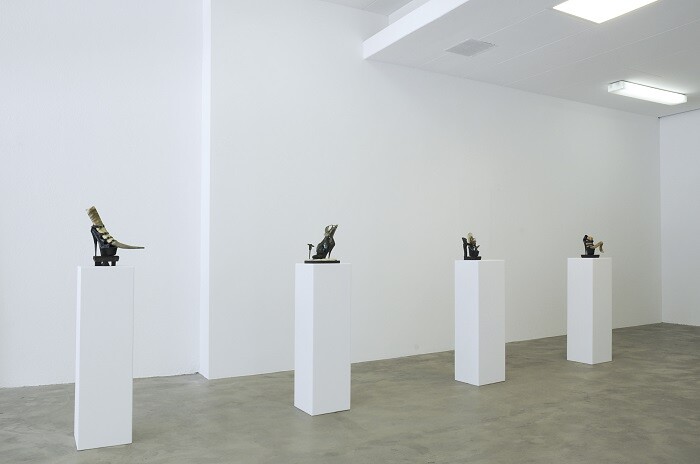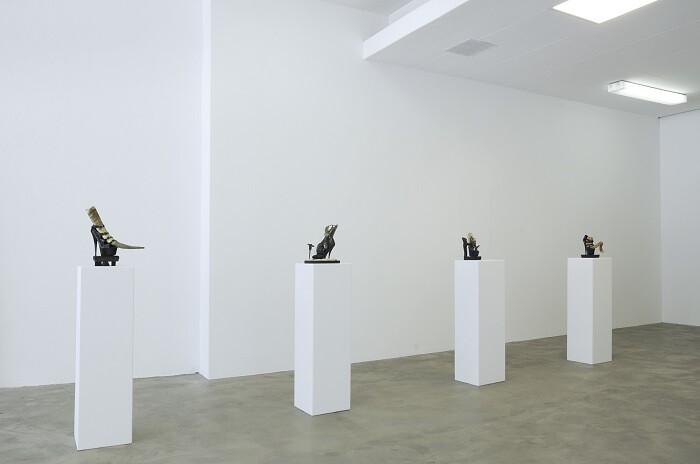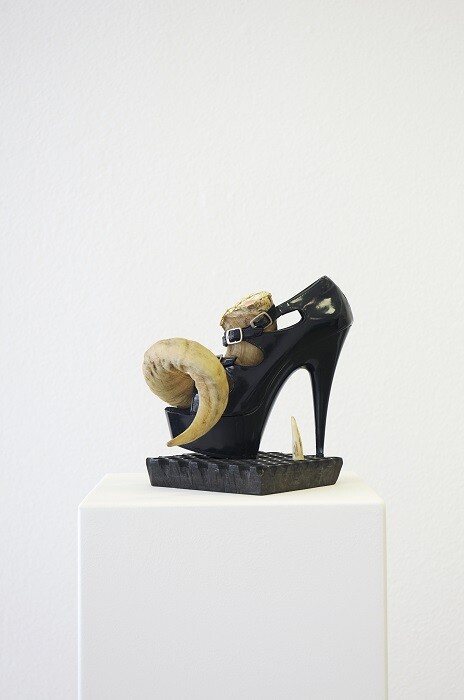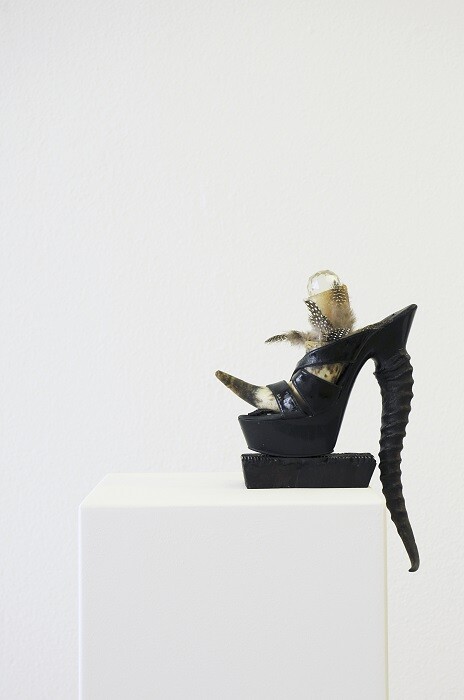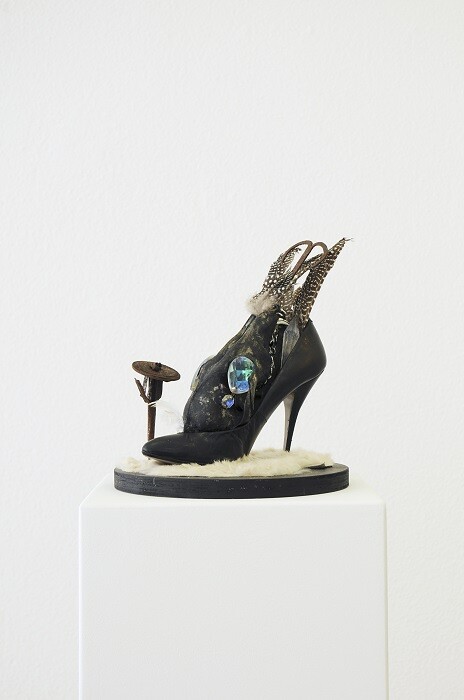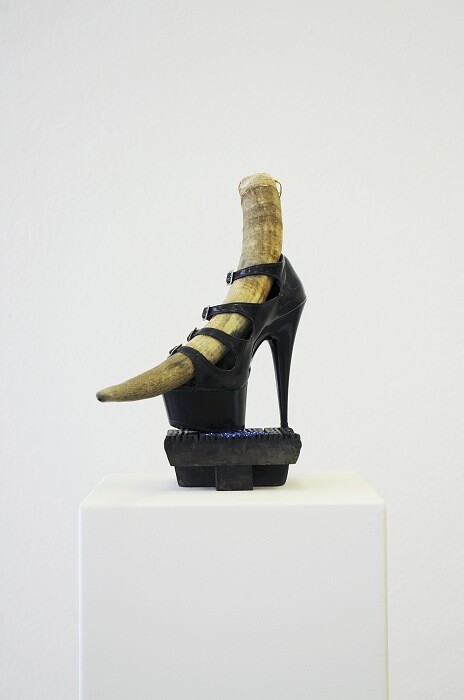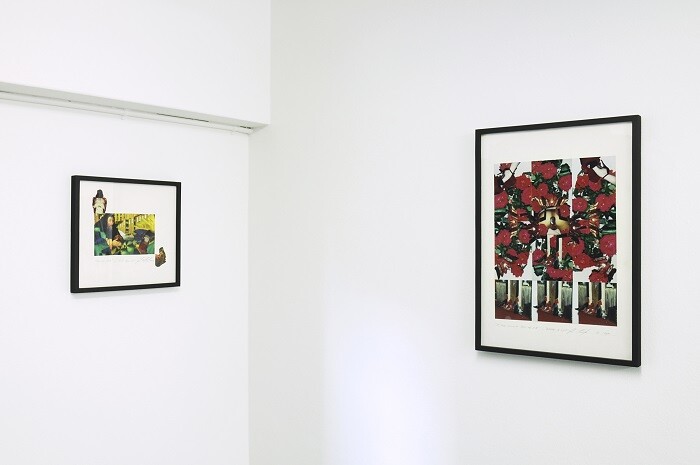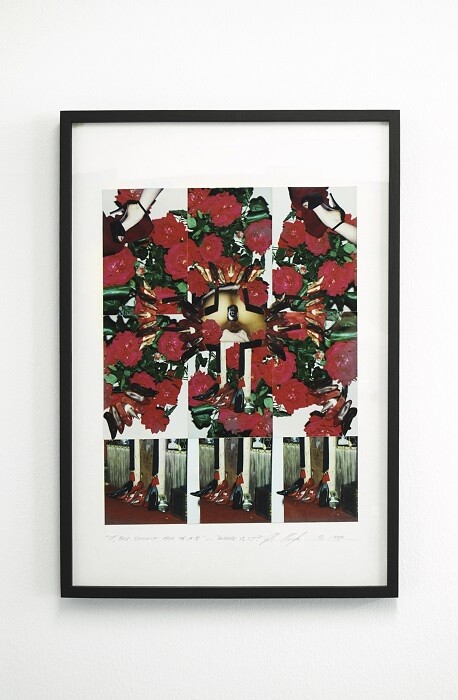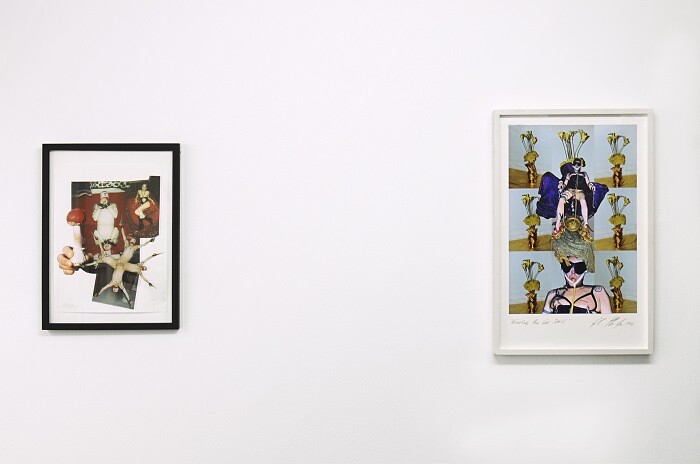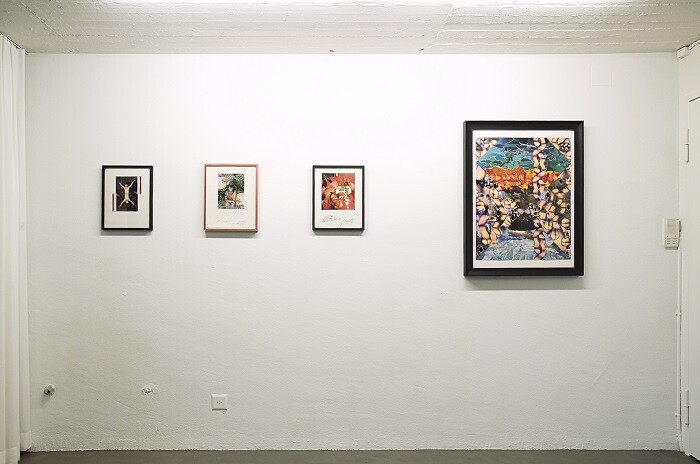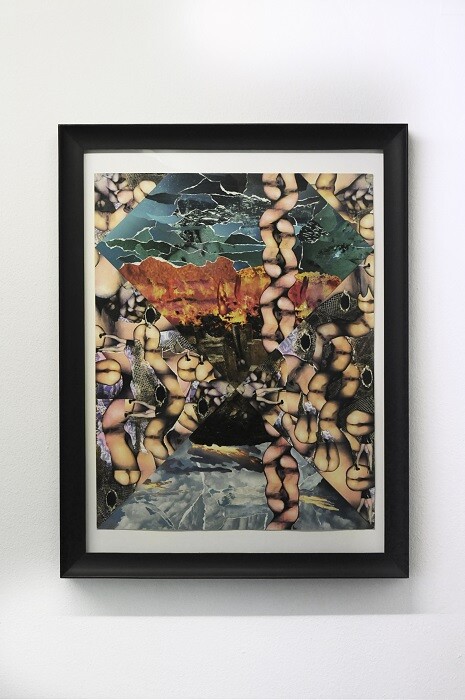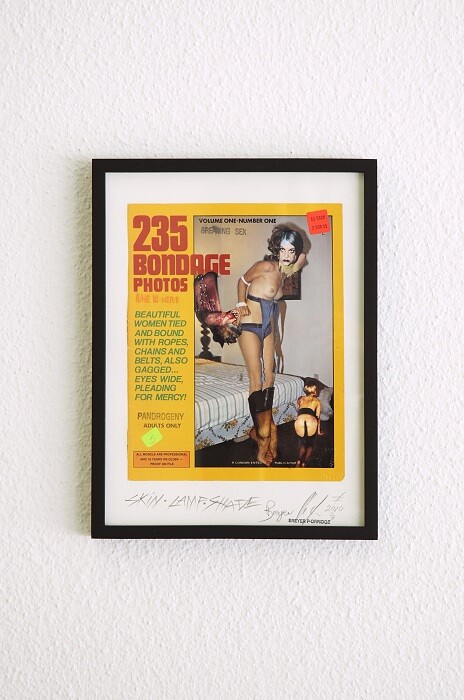A long, long time ago—in 1976—an artistic collective called COUM Transmissions, of which the active members at the time were Genesis P-Orridge, Cosey Fanni Tutti and Peter Christopherson, held a short exhibition at the ICA in London entitled “Prostitution.” Pornographic photographs of Cosey Fanni Tutti were the main element: these had previously appeared in porn magazines and were re-appropriated for the exhibition. There were sculptures with used tampons, performances of stripping, and inexpert but enthusiastically experimental music too, so it was little wonder the British press were able to find an offended Right Honourable Member of Parliament. The Daily Mail quoted Conservative MP Nicholas Fairbairn calling the artists “the wreckers of civilization. They want to advance decadence.”
Nearly 40 years later Genesis Breyer P-Orridge continues to take aim at so-called civilization. This can be found within her/his exhibition at Galerie Bernhard, and it is an inescapable part of her/his identity. Breyer P-Orridge was born Neil Megson in Manchester in 1950, changing his name to Genesis P-Orridge in 1971; the name Breyer came with marriage to the now deceased performance artist Lady Jaye Breyer P-Orridge. Her/his artistic outlets before and after COUM Transmissions include the collective The Exploding Galaxy, the band Throbbing Gristle that succeeded COUM, bands Psychic TV and Splinter Test, and the spoken word project Thee Majesty. Also, fundamentally, what s/he calls “pandrogeny,” undertaken with Lady Jaye. They started by dressing alike and this developed to the point that both went through several surgical procedures in order to more closely resemble each other, with the intention of becoming one being, a “pandrogine”—and this also explains why s/he uses a bi-gender identity. In the “Pandrogeny Manifesto” they state the desire for a “conceptually more precise body,” an entity beyond gender: “every man and woman is a man and woman.”1 Though Lady Jaye died in 2007, Breyer P-Orridge continues to refer to her/himself in the first person plural—“ we ”—and the convention has developed of referring to her/him using both genders.
In Galerie Bernhard, single shoes make four small sculptures, Shoe Horn #3 & 4 (2014) and Shoe Horn #5 & 6 (2015), placed on top of plinths lined up in a row. Each is a cornucopia packed full of a selection of dark feathers, paste jewels, small animal skulls, pieces of rusty metal and glistening objects. Long, curling horns, one serving as the spiky and absurdly long heel of Shoe Horn #5, two more inserted inside the open shoes, echo Bacchus and his celebrations. But the shoes look worn and uncomfortable and their tall platform soles teeter on Nepalese fabric printing blocks. Breyer P-Orridge has zoned in on feet and squeezed countless signals towards both established mores and alternative practices into her/his vessels. Neither the associations with propriety and control—bound feet or aristocratic mincing, say—nor activities that are marginal to society—like stripping or bondage—dominate. The wearer’s comfort or discomfort, the degrees of control and self-expression, all remain in the balance. Platform high-heels have been divested of most of their shadowy charge in recent years, starting with Vivienne Westwood and filtering down into vanilla mainstream fashion; Breyer P-Orridge shoehorns their overlooked heritage back in and throws in an array of further esoteric possibilities for good measure.
Cut-ups have been the mainstay of Breyer P-Orridge’s art for several decades: they informed her/his early mail art which led to an (ultimately dropped) charge of disseminating pornographic material by the General Post Office in the UK in 1975, for instance. Other works on paper went close to the bone by combining pornography with images of children. S/he was inspired by William S. Burroughs and Brion Gysin’s cut-ups and applied the tactic in art, music, and happenings, and, of course, uniting two bodies in pandrogeny. The exhibition “Breaking Sex” includes nine small-scale cut-up works that mix clippings with photographs, such as Cock Flavored Soup (2000) that slashes together a food label with close-ups of penises and vaginas in a brightly illuminated potage of flesh, print and orange latex. There is also one atypical cut-up work, Untitled (Ear Yin Yang) (2015): two C-prints more than a meter tall of the same ear and hairline, the cheek showing the traces of a recent cosmetic operation, are mounted side by side, one turned upside down so as to roughly make a yin and yang symbol. It’s simple, obvious, and encapsulates much of Breyer P-Orridge’s recent endeavours. Polarities are discarded in favor of interdependent dualities; suturing parts of two others forms new, third entities. What is incomprehensible and impressive is her/his commitment to a radically simple project.
If Breyer P-Orridge has been needling standards of propriety for several decades, we can, in hindsight, observe no small astuteness in the provocation: from the examples mentioned at the start alone, s/he challenged the economy of pornography; illuminated fossilized Tory values and the often-concomitant hypocrisy; and rubbished the idea of fixed identities while not cleaving to the norms of gender politics either. It is also difficult to be offended by the message of unconditional love that informs her/his pandrogeny project. Add to this the fact that the Tate Gallery has acquired her/his archive, and a would-be outsider figure is in danger of becoming the beloved and harmless eccentric in the art family. But a pared back and razor-sharp presentation in Zürich pierces the cushion of those expectations.
“The Pandrogeny Manifesto:” https://www.youtube.com/watch?v=A7RT05cf1w8.
